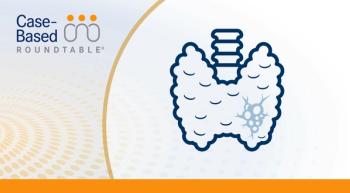
Overview of RAI-Refractory DTC
Steven Sherman, MD, FACE, provides an overview of the history and evolution of treating patients with RAI [radioactive iodine]–refractory differentiated thyroid cancer [DTC].
Steven I. Sherman, MD, FACE: The history of treating patients with radioiodine-refractory differentiated thyroid cancer is relatively short. Twenty years ago, we didn’t necessarily recognize the concept of patients being radioiodine refractory, perhaps because there was not a significant opportunity for treatment or a significant intervention that was going to be beneficial.
What has developed over the last 15 to 20 years is a multipronged, multidisciplinary approach, but a lot is built around the availability of systemic therapies, particularly the tyrosine kinase inhibitors and other forms of targeted therapies that have led to more than 10 approved medications being available to treat many of the different subgroups of patients with radioiodine-refractory disease.
The evolution of treating radioiodine-refractory disease is still ongoing. But it begins with recognizing that our armamentarium, our portfolio, of therapies still lacks a significant curative intervention for metastatic disease that is radioiodine refractory. Recognizing that most of our available therapies primarily are able to halt progression or induce some partial response, the treatment landscape is primarily focused on patients who have radiographically progressive disease that is measurable, typically at least 1 to 2 cm in diameter, or significantly symptomatic.
The National Comprehensive Cancer Network identifies this cohort of patients who have disease that’s growing by 10% to 20% per year that meets these size criteria or symptomatic criteria and who have no evidence of radioiodine uptake on diagnostic or post-treatment scans.
There’s also an emphasis these days on identifying particular subgroups that might be treated with a molecularly targeted therapy based on the presence of a particular oncogene mutation. But for many of the patients, there is not an FDA-approved targeted therapy specific to their underlying mutation.
The selection of an initial starting treatment may be affected by multiple considerations, including what a patient might be able to tolerate. This is critically important because if our primary defined benefit of therapy is prolonging progression-free survival, that means that this is a treatment that we want to be able to keep patients on for a long enough amount of time that they are able to experience that benefit. It’s important that we recognize what the key adverse effects are that might be dose limiting or duration limiting for therapy, and select which treatment to use for patients based on what they’re most likely able to tolerate.
Transcript edited for clarity.











































